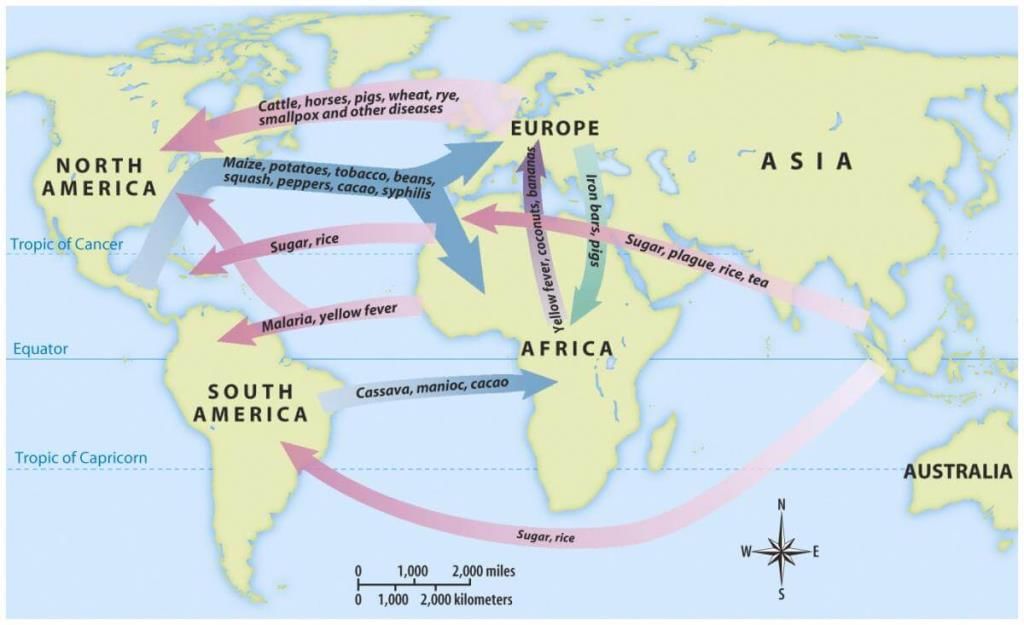Textbook Questions
. Give two examples of different types of global exchanges which took place before the seventeenth century, choosing one example from Asia and one from the Americas.
Ans:
(i) Asia
- The Silk Routes are an example of vibrant pre-modem trade. These routes linked Asia with Europe and northern Africa and were used for trades in Chinese pottery and spices from India and Southeast Asia.
- Gold and silver came from Europe to Asia. Noodles are believed to reach Europe from China.
- Christian missionaries and Muslim preachers too travelled through these routes.

(ii) America
- America was rich in foods and minerals. Today’s common foods like potatoes, tomatoes, chillies, soya, maize, groundnuts, etc., came to Europe and then Asia from America after Christopher Columbus accidentally discovered this continent.
- Precious metals like silver from mines in Peru and Mexico enhanced Europe’s wealth and financed its trade with Asia.
- Thus, there was a global exchange before the seventeenth century
Q2. Explain how the global transfer of disease in the pre-modern world helped in the colonization of the Americas.
Ans:
- The global transfer of disease in the pre-modern world helped in the colonisation of the Americas because the native Americans had no immunity against the disease that came from Europe.
- Before the discovery of America, it had been cut off from the rest of the world for millions of years. So, they had no defense against the disease.
- In particular, Smallpox proved a deadly killer. It killed and decimated whole communities, paving the way for conquest.
The disease named smallpox proved deadly killer for America’s original inhabitants.
Answer: The germs such as those of smallpox.
Answer: (i) Before the discovery of the sea routes, America had been cut off from regular contact with the rest of the world for millions of years. But from the sixteenth century, its vast lands and abundant crops and minerals began to transform trade and lives everywhere.
(ii) Precious metals, particularly silver, from mires located in present day Peru and Mexico also enhanced Europe’s wealth and financed its trade with Asia. Legends spread in seventeenth-century Europe about South America’s fabled wealth. Many expeditions set off in search of El Dorado, the fabled city of gold
(iii) With the discovery of sea routes three types of movements or flows became prominent. i.e., the flow of goods, labour and capital
Q. How did silk routes link the world? Explain with three suitable examples.
OR
Explain any three characteristics of the Silk Route.
Ans. Pre-modern trade and cultural links between distant places were established by the Silk Routes.
- The silk route linked the West and China as silk cargoes were carried along this route. Historians have mentioned and identified several silk routes over land and by sea which brought together vast areas of Asia and linked Asia with Europe and Northern Africa.
- Chinese pottery travelled to India through these routes, even before the Christian era, and textiles and spices from India and South-East Asia; precious metals, like gold and silver, flowed from Europe to Asia.
- Trade and cultural exchange took place at the same time. Buddhism emerged from eastern India and spread in several directions through the silk route. Christian missionaries travelled through these routes to Asia, as did the early Muslim preachers a few centuries later.




No comments:
Post a Comment